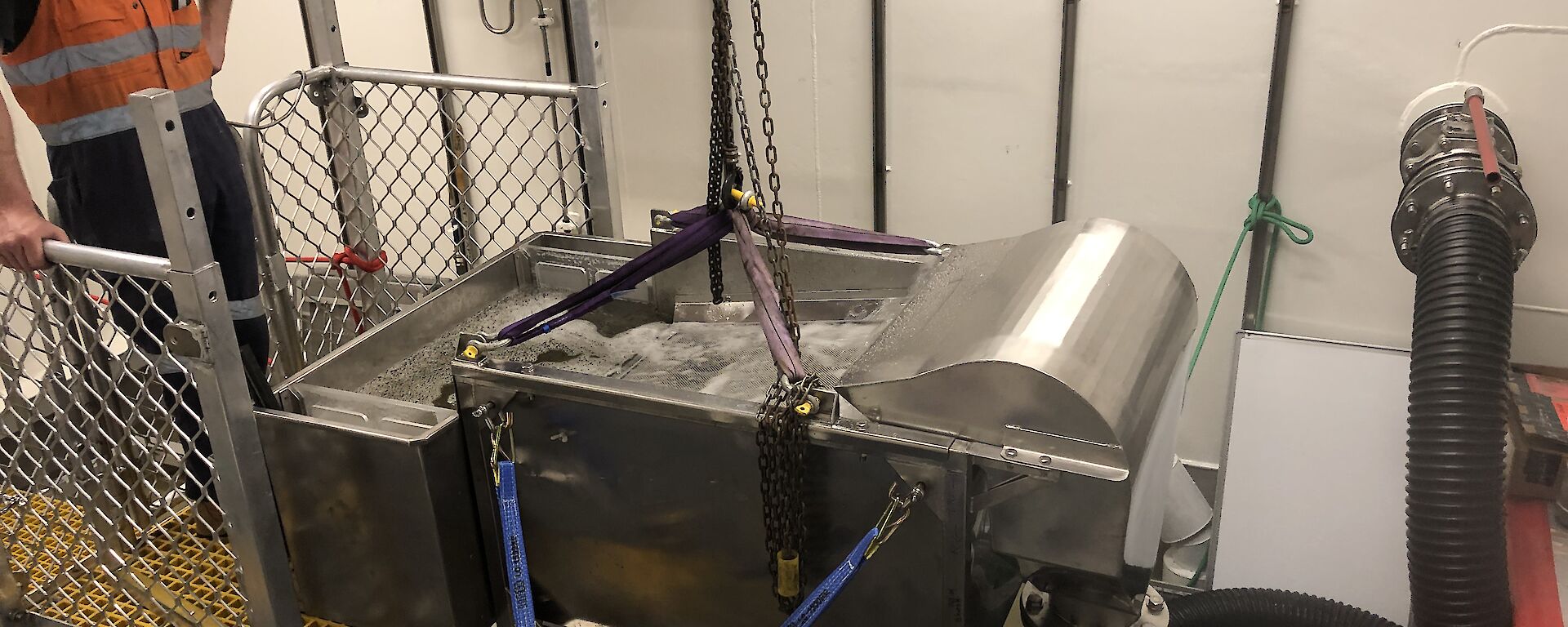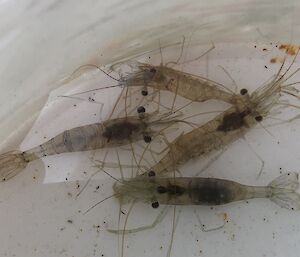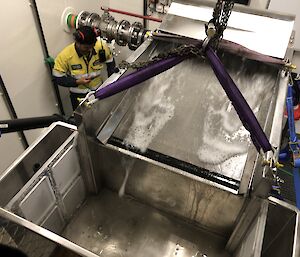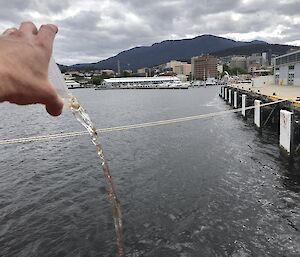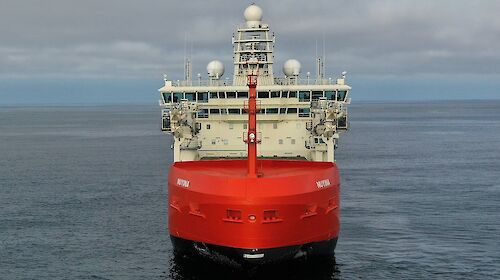Australian Antarctic Division krill biologist, Rob King, said the catch was the culmination of years of planning and problem solving to find a way to collect fragile Antarctic organisms, such as plankton and krill, alive and in pristine condition.
In Antarctica, krill caught in the wet well will be used for physiological and behavioural research on board Nuyina, or brought back to Australia to add to the population of wild krill in the Antarctic Division’s land-based aquarium, for ongoing research.
“These Derwent Estuary shrimp went through the ‘sausage machine’ but didn’t come out as a sausage,” Mr King said.
“It’s such a relief. They have proved the concept of the wet well as a sampling system that can gently capture fragile specimens.”
Unlike trawling, which can damage and stress krill, the wet well tests show that animals can be caught in perfect condition. This improves scientists’ confidence that their experiments will reflect what may happen in the wild.
The shrimp were caught by connecting a prototype ‘filter table’ to a water inlet in the ship’s hull. The water flowed over and through a mesh screen on the table and delivered the catch into a collection tank, where the shrimp could be scooped out. Excess water then flowed out of the system on to the floor of the watertight room, where it exited through a drain before being pumped back out of the ship.
“We had a flow of 1800 litres per minute across the filter table, so it was pretty spectacular. It’s a proper wet lab – I came out wet,” Mr King said.
This week, and during future Nuyina voyages, Mr King will test the flow rate of water from three different inlets when the ship is under different simulated loads.
“How heavily laden the vessel is affects the flow rate into the wet well, and we need to make sure we design a system that can cope with the range of flows,” he said.
“Knowing the flow rate allows us to estimate the density of animals we’re catching, and it also allows us to design our equipment to cope with that flow and ensure the animals don’t get smashed about or washed on to the floor.”
So far everything looks good, with the system performing as anticipated.
“We’ve over-engineered our system but there’s nothing like a real test. Overall, I’d have to say this is a really good start.”
The next test will be on the system’s performance when the vessel is in sea ice.
The shrimp were released unharmed back into the Derwent Estuary

